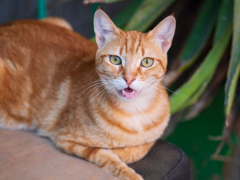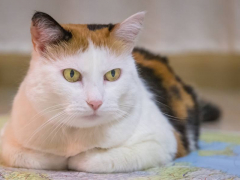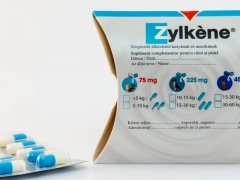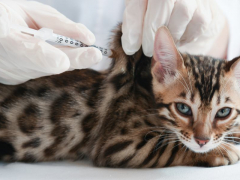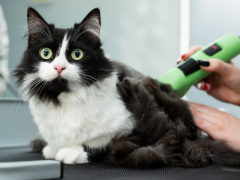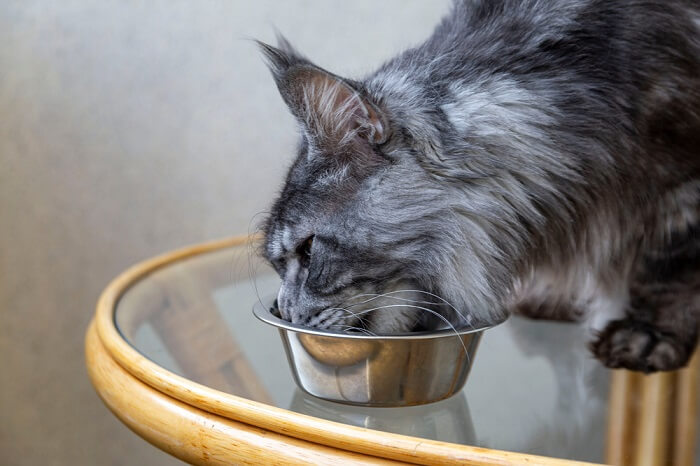
Capromorelin is a liquid oral solution medication used for appetite stimulation in dogs and cats. Currently, there are two brands of medication used for pets, both developed and manufactured by Elanco Animal Health. Entyce is the product FDA approved for dogs.
Capromorelin For Cats Overview

Elura, which recently became available in 2020, is FDA approved for use in cats. In this article, you’ll learn how capromorelin works including more info about the Elura product, potential side effects, and frequently asked questions.
About Capromorelin for Cats
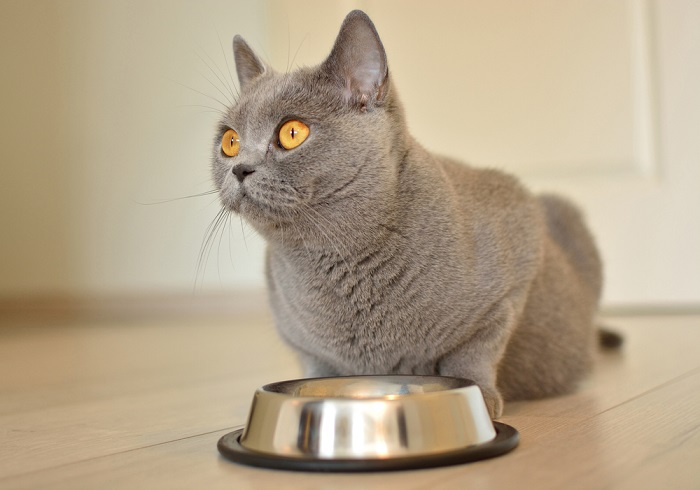
Capromorelin is classified as an appetite stimulant and is used to increase the appetite of cats experiencing poor appetite or weight loss. Elura specifically is FDA approved for use in cats with chronic kidney disease (CKD) to help them gain weight.
Also Read: Kidney Failure In Cats: Symptoms, Diagnosis, & Treatment
Capromorelin is a ghrelin-receptor agonist, or stimulator, which in turn stimulates growth hormone release, causing the feeling of hunger that leads to stimulation of appetite.
Ghrelin is a natural hormone in the body, and capromorelin essentially mimics part of the pathway leading to its release. Interestingly, ghrelin has also shown to have some other beneficial effects as well, including stimulating bone formation, increasing muscle mass, and exhibiting some anti-inflammatory and immune system modulating effects.
What Does Capromorelin Do for Cats?
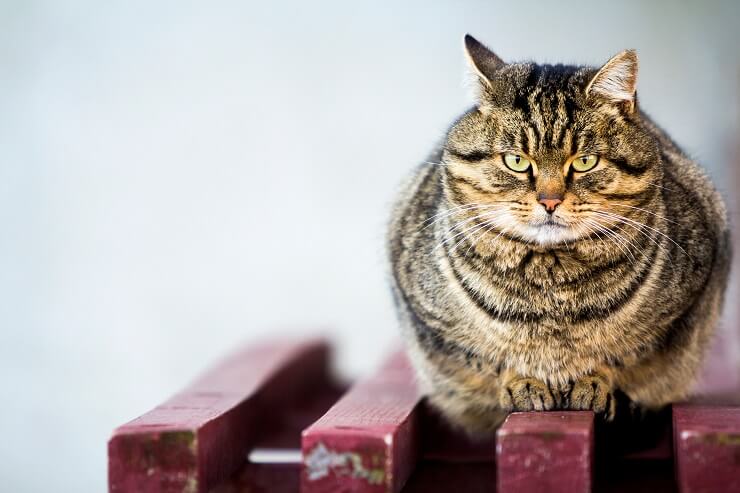
In field studies involving about 120 cats given Elura showed a 5.2% increase in body weight after 8 weeks.
Capromorelin is the only FDA approved appetite stimulant available for cats.
The cat-specific product Elura was studied in cats with chronic kidney disease (CKD). In field studies involving about 120 cats given Elura, a 3.3% increase in body weight was seen after 2 weeks with a 5.2% increase after 8 weeks.
Side Effects of Capromorelin for Cats
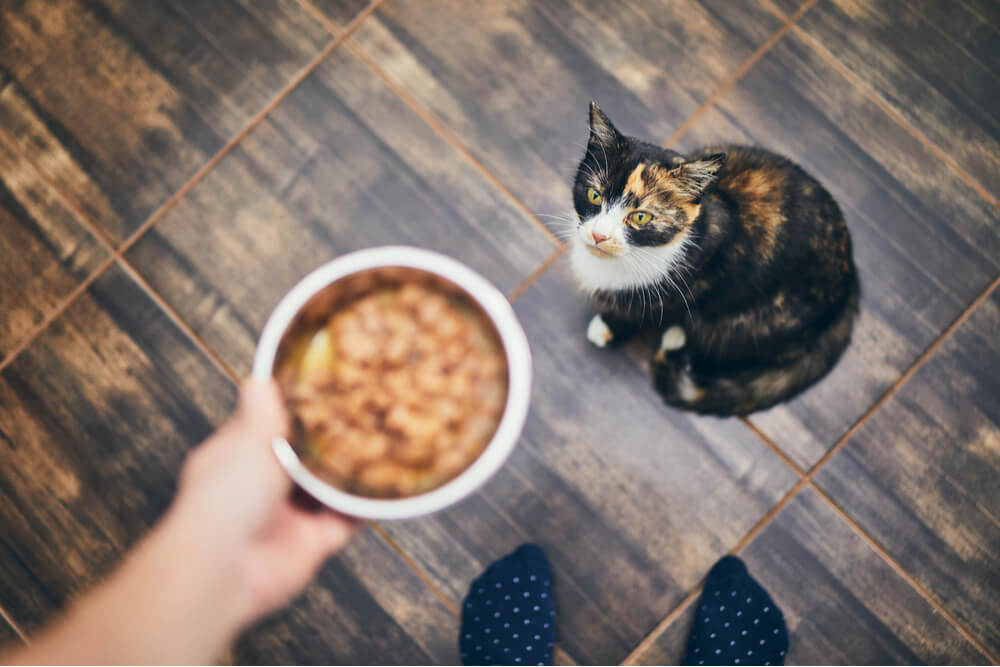
Capromorelin is generally considered to be well-tolerated by most cats. The most common side effects seen during the study of cats with CKD included vomiting, hypersalivation (drooling), inappetence, behavior change, and lethargy. Just under 30% of cats were observed to have some vomiting, with other frequencies being lower. All other adverse reactions listed were seen in less than 10% of cats.
The cats in the CKD study in which capromorelin was used were 15 years of age on average and most had one or more other diseases or conditions besides CKD. This included diseases like hyperthyroidism, heart disease, Feline Gingivitis, and high blood pressure.
The safety of Elura for both longer durations of treatment as well as exceedingly high doses has been evaluated.
Cats receiving Elura at 3 times the labeled dosage for up to 90 days tolerated treatment well and exhibited no ill health effects. Cats receiving up to 30 times the labeled dosage for 2 weeks experienced a higher frequency of vomiting, drooling, and lethargy, but no other ill effects.
Cautious use of Elura is advised in cases of cats with heart disease, liver dysfunction, and severe dehydration. Because it acts on growth hormone, its use should be avoided in cats diagnosed with the rare condition acromegaly, where the body is producing too much of its own growth hormone already.
Because Elura was found to increase blood sugar for several hours after administration in some cats, its use in diabetic or prediabetic kitties should be considered carefully and may not be appropriate.
Also Read: Feline Diabetes: Diagnosis, Treatment, and Remission Demystified
When administering any oral solution to a cat, it’s important to remember that cats are very sensitive to taste and may experience a bitter taste type of reaction. While possibly not true side effects, signs like vomiting, increased salivation, lip smacking, and head shaking immediately after administration, but resolving within a few minutes, may be seen due to a taste response.
If you have any concerns for potential toxicity resulting from use of Elura, it is always best to contact your veterinarian, the ASPCA Animal Poison Control Center (1-888-426-4435), or Pet Poison Helpline (1-855-764-7661) for further advice.
Capromorelin for Cats Dosage
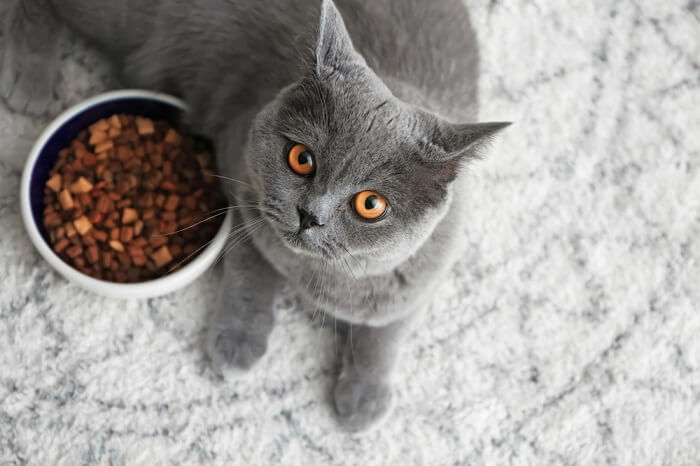
Even though there are no limitations stated for the duration of usage of Capromorelin in cats, most appetite stimulants should only be used as needed.
The FDA approved dosage for cats for Elura is 2mg/kg (0.9mg/lb) or 0.1ml/kg (0.045ml/lb) of body weight once daily. There is no limitation stated in terms of how long Elura can be used.
However, most appetite stimulants should only be used as needed. Your veterinarian can provide the best guidance in terms of how long Elura should be used and how often.
There is no age limitation stated for Elura either, however, it has not been studied in cats less than 5 months old. It also has not been evaluated for use in pregnant or lactating queens.
The Elura bottle comes with its own dosing syringe and instructions for use. Following is a summary of how to administer Elura based on the manufacturer’s information.
The cap must first be removed. The dosing syringe should be inserted into the hole in the top of the bottle. The bottle is then turned upside down with the syringe inserted.
With the bottle upside down, the syringe plunger is then pulled back to withdraw the correct volume of solution. The bottle is returned to an upright position, the syringe is removed, and the cap is replaced.
To administer the solution, it must be squirted directly into the cat’s mouth. This can best be accomplished by having your cat sit on your lap facing away from you.
Insert the syringe into the corner of your kitty’s mouth until s/he opens the mouth on reflex. Use this opportunity to insert the syringe further and push down the plunger to expel the solution.
If your cat is difficult to medicate, talk to your veterinarian about methods that may work best. Sometimes wrapping your kitty in a towel (commonly referred to as a “kitty burrito”) can help to calm and immobilize some cats long enough to administer an oral medication.
Elura is best given on an empty stomach 30 minutes prior to feeding. According to dosing studies, it may have a delayed onset of action if given with a meal. It likely may have reduced efficacy if the solution is simply squirted onto a cat’s food in the hopes that s/he will ingest the solution while eating food.
The manufacturer recommends redosing Elura if a kitty vomits within 15 minutes of the first administration.
Conclusion

Elura is an extremely helpful medication to use to help cats suffering from weight loss, poor weight gain, or an overall decreased appetite.
Currently, it is the only FDA approved appetite stimulant available for cats. Its only downside may be that some cats are adverse to liquid medications.
Drug Dosing Disclaimer: We are only able to provide doses for medications that are FDA approved for use in cats and only as the label guidelines dictate. For medications that are used off-label we can only provide guidelines and safety information for use. Safe and appropriate dosing for off-label medications can only be determined by a primary care veterinarian.
We encourage you to work with your veterinarian to determine if a particular medication is appropriate for your cat. Changing or adjusting a dose for your cat on your own without consulting with a veterinarian can carry risk. We do not encourage use of medications prescribed for human use in pets without first consulting with a primary care veterinarian.
Frequently Asked Questions
Can Entyce Be Used in Cats?
Entyce is the FDA approved capromorelin product for dogs. Currently, with Elura on the market, there is much less of a need to consider using Entyce in cats.
According to veterinary oncologists Chad Johannes and Margaret Musser in an article they co-authored titled “The Use of Capromorelin for the Clinical Problem of Inappetence” published in Today’s Veterinary Practice in 2019, a dose of capromorelin, presumably Entyce (as it was the only capromorelin product available at the time), could be used at 2mg/kg once daily. It should be noted that at the time the article was written, Elura was not yet on the market.
Use of Entyce is no longer necessary with Elura now available, which has dosing and safety studies available specifically for cats. If you have Entyce at home for a pup and wish to use it for your cat, you would need to discuss this with your veterinarian, as this would be considered extra-label use of Entyce.
How Long Does Mirtazapine Take to Work in Cats?
Prior to capromorelin products being available, mirtazapine was one of the only appetite stimulants available to use for cats. In the author’s experience, a cat’s appetite should be seen to increase within a couple hours of administration of an appropriate dose of the oral tablet form. Effective dosing of mirtazapine has been found to be about once every 48-72 hours for many cats.
The transdermal form of mirtazapine (the brand Mirataz made by Dechra) may take up to 16 hours to reach its peak concentration with the first dose, but only about 2 hours after subsequent daily doses.
By comparison, Elura reaches its peak concentration in about 15 to 60 minutes, so may be found to work much faster.
When deciding which appetite stimulant to use, it may often come down to what is most convenient for dosing. Mirtazapine tablets only need to be given once every 48 hours at the most often for a cat. In cases where an oral medication is not reasonable for a particular kitty, the transdermal Mirataz can be very helpful. But, if a kitty doesn’t mind a liquid solution, and a quicker onset of action is desired, Elura may be best.
Most veterinary practices will carry at least two of these products if not all three, so make sure to discuss the options and their benefits/detractors with your veterinarian.
